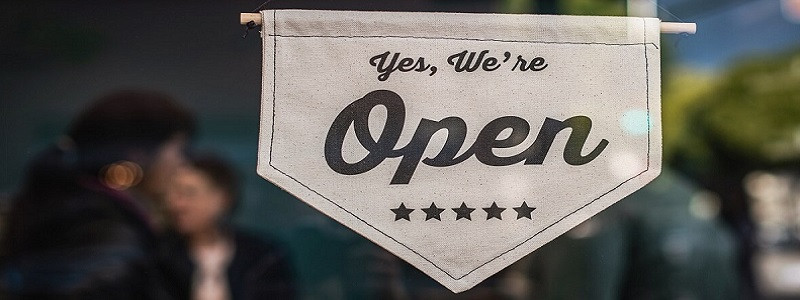Updated 13 October 2021
5min read
For many people, life has returned to something like normal. But an estimated 1.6 million people are still having part of their wages paid by the furlough scheme, as some sectors are struggling to return to their pre-pandemic prime. Lots of people have questions about what comes next, so here’s everything you need to know about the end of furlough.

The furlough scheme (officially known as the Job Retention Scheme) has been a lifeline for businesses and workers during the scariest times of the pandemic. At its peak in May 2020, close to nine million people were reliant on the scheme and more than 11.6 million people have benefitted from it to date.
Sectors such as travel, hospitality and entertainment have been particularly reliant on the scheme, as some businesses remained shut, or operating at a fraction of their normal capacity, for more than 18 months.
What impact has furlough had?
By ensuring workers’ wages didn’t drop below 80% of normal (up to a cap of £2,500), people have been able to continue paying their rent or mortgages, feed themselves and carry on spending on essentials to support the economy.
Before the scheme was announced, it was predicted that as many as one in 10 people could become unemployed. Furlough has helped to keep it below one in 20.
Some sectors have been disproportionately impacted by Covid, meaning they have relied more heavily on furlough. According to HMRC, accommodation and food services has racked up the biggest bill, making £5.2 billion in furlough claims between November 2020 and the end of April 2021.
Arts, entertainment and recreation has also used £1.3 billion of funds over the course of the same period.
Why is furlough coming to a close?
All legal restrictions on businesses have now lifted and life is on its way back to normal. As a result, lots of companies no longer need to rely on furlough payments to cover staff wages. But that’s not the case universally, and a more compelling reason for ending the furlough scheme is likely to be its astonishing cost.
Though it has saved the country from mass unemployment and kept businesses alive during enforced shutdowns, the furlough scheme has been extremely expensive.
The BBC has reported that it’s cost £66 billion to date – roughly 20% of the entire amount that the UK’s government has spent on its Covid response measures. A scheme this expensive is difficult to keep running over the long term, despite the clear benefits it has produced so far.
When is the furlough scheme ending?
The scheme has been winding down for a few months and stopped topping up workers’ wages on 30th September 2021. Since July, the government has slowly been shifting the cost of salaries back to employers to help them return to normal.
In the first month, employers had to pay 10% of workers’ wages, with the government contributing 70%. It has fallen further throughout August and September, and the government contribution is now at 60%. Employers have also remained responsible for staff pensions and NI contributions throughout.
What impact will the end of furlough have?
Even though legal restrictions have been removed, the return to pre-pandemic levels of demand will be much slower for some sectors. Leading insights company McKinsey predicts that the airline industry, for example, won’t return to ‘normal’ before 2024.
And figures from the UK Treasury suggest that more than 50% of people in the air travel sector and 40% of travel workers were still on furlough at the beginning of September.
The ideal post-furlough scenario is that companies will now be enjoying enough to demand to resume paying workers’ wages as normal. However, jumping from contributing less than 50% of wages to 100% will not be possible for every business.
Sadly, some redundancies are an unavoidable consequence of wrapping up the scheme. It’s thought that around one million workers’ wages will still be partially covered by furlough once it ends.
It is worth mentioning that the Chancellor has recently announced a £500m fund to support poorer families now that furlough is ending. This will include grants for payments to cover essentials like food, clothing and utilities, which will be distributed by local councils. These will not be available to everyone though.
What is the statutory redundancy process?
According to the statutory redundancy protocol, employers should have already told staff if they’re going to be made redundant when furlough payments end. Workers must be given at least one week’s notice if they’ve been with the company for between one month and two years.
The notice period increases by a week for every year of service, up to a maximum of 12 weeks’ notice for employment periods of 12 years or more. Legally, your employer cannot give you less than your statutory period, but they may choose to give you more as a courtesy.
Workers will also be given statutory redundancy pay if they’ve been with a company for more than two years. This will be based on your normal salary and not your furlough payments. Since 6th April 2021, the maximum statutory amount any worker can get is £16,320 but, again, your employer may choose to offer you more.
There are four categories of workers that are exempt from the statutory requirements:
former registered dock workers (covered by other arrangements) and share fishermen
crown servants, members of the armed forces or police services
apprentices who haven’t finished their apprenticeship
domestic servants (such as a cleaner or gardener) who are employed by their immediate family
What are the next steps for workers after furlough?
If your job has been one of the casualties of the pandemic, there are a number of options. Thankfully, job vacancies have reached their highest level since March 2020, soaring to 758,000, meaning there are lots of opportunities for people to embark on a new career. However, the BBC has reported that one in 20 workers say they’re struggling to actually land a new job, despite the high numbers of vacancies.
If you’re looking for an emergency stopgap, you may still be able to access normal government support payments like jobseeker’s allowance (JSA) and Universal Credit. Some benefits are means tested, however, so your eligibility will be affected by things such as your overall household income and any savings you have.
How can I plan for the end of furlough?
If you’re a business owner facing the end of the furlough scheme, you need to make a robust financial plan regardless of what your next steps are.
Those who are planning on bringing staff back from furlough will need to analyse their budgets in detail to accommodate significant extra expenses. And companies that are letting staff go may want to reallocate any salary funds into improving the business.
You can use the simple search tool on Unbiased to find a professional to guide you through this difficult period. Whether you’re looking for a solicitor you can trust to advise you on redundancies or would like to work with a financial adviser to boost your business’s financial health, you can find them right here.
Credit: Source link











